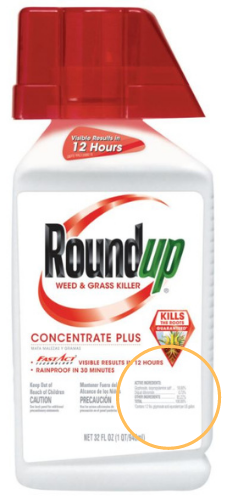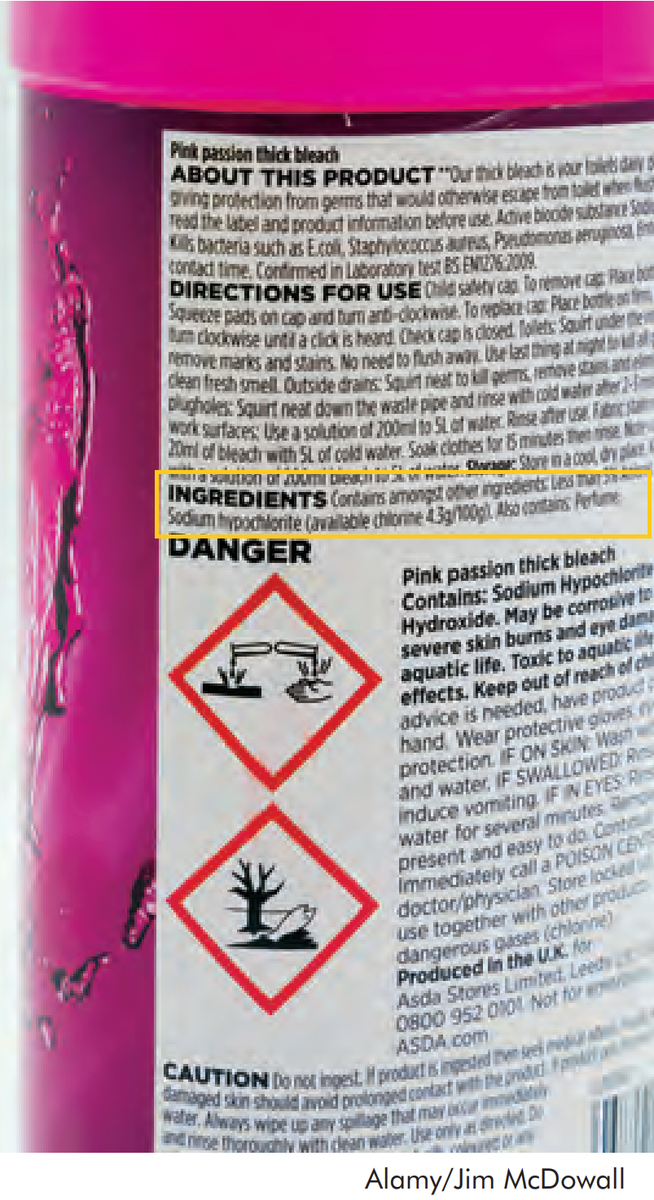Gateway on Pesticide Hazards and Safe Pest Management
How To Find Ingredients in Pesticide Products
Beyond Pesticides offers resources below to evaluate the health and ecological effects of specific chemical exposure from ACTIVE INGREDIENTS in pesticide products, as well as regulatory information and supporting scientific documents. Because various pesticide products can contain more than one active ingredient, it is important to READ the LABEL to determine chemical components.
With 192 different active ingredients and counting, it is essential to establish the connection between the use of these chemicals and their respective hazards.
View the step-by-step guide on how to search for the active ingredient(s) in pesticide products below:
- Go to U.S. EPA's Pesticide Product and Label System and enter the product name. The generic product name may vary.
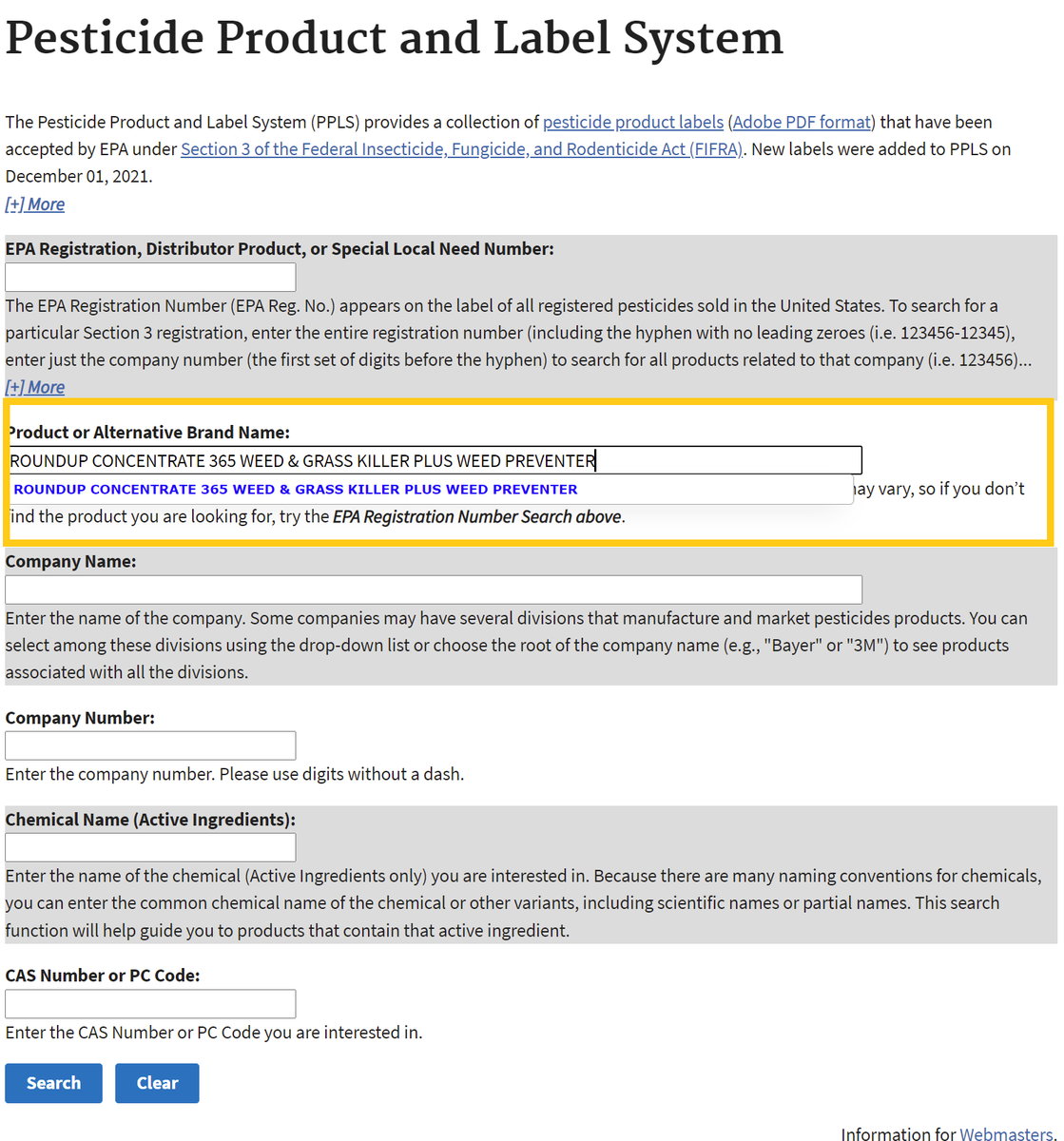
- After searching, click on the chemical ingredients tab or the link for the most recent label to find Active Ingredients.
Chemical List Label List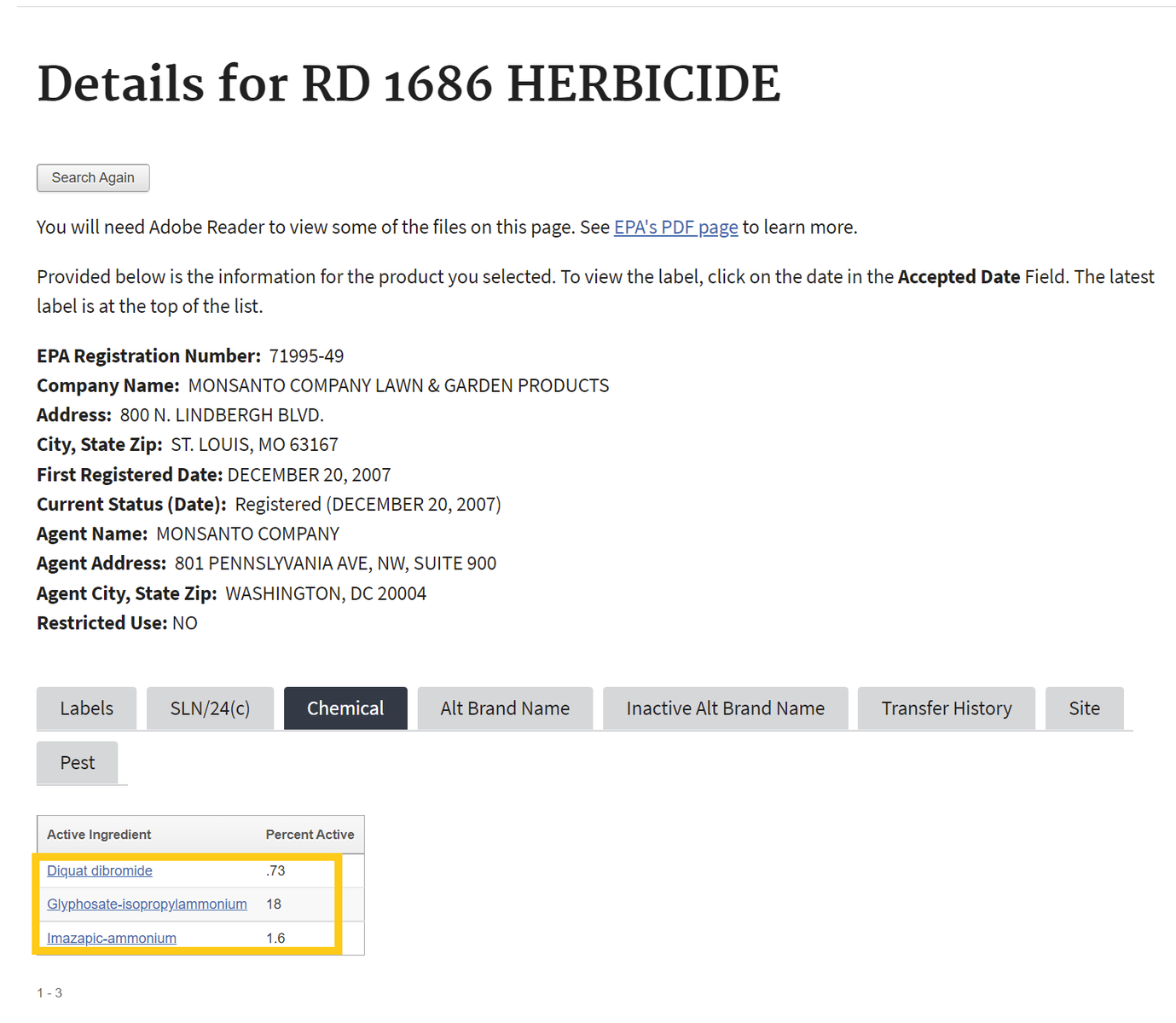
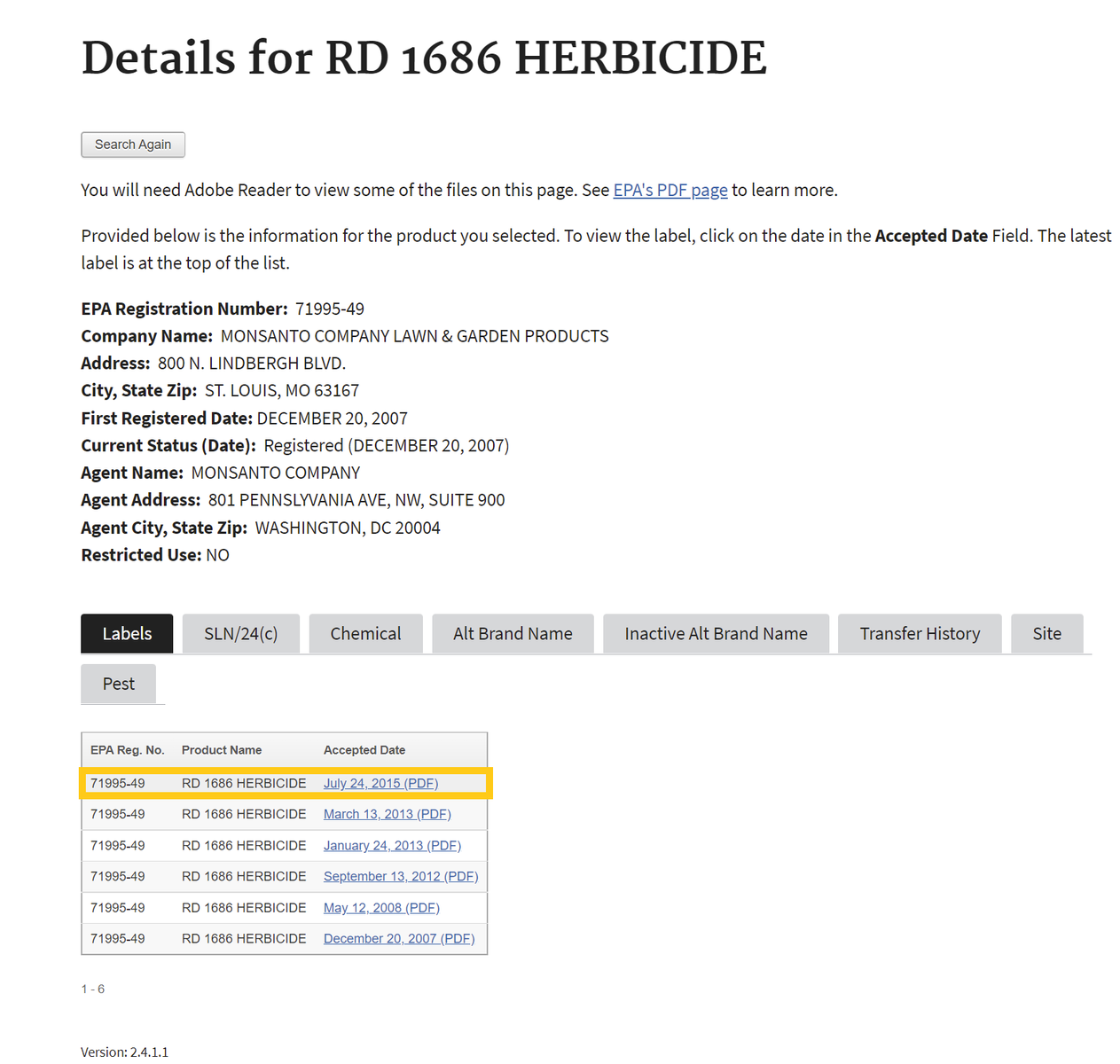
If one selects the chemical ingredients tab, skip to Step 4 . If not, proceed to step number 3 - To find the active ingredient(s) on the label, search for the page in the document containing the date of registration. Usually, the active ingredients section occurs within the first few pages of the label document.

- Return to the Beyond Pesticides Gateway and search for the active ingredient name in the yellow box to the right or from the list below.
Naled
General Information
- Fact Sheet: Naled.pdf
- Product Names:
- Chemical Class: Organophosphate
- Uses: Control of mosquitoes, blackflies, aphids, mites
- Alternatives: Organic agriculture
- Beyond Pesticides rating: Toxic
Health and Environmental Effects
- Cancer: Not documented
- Endocrine Disruption: Not documented
- Reproductive Effects: Yes (43)
- Neurotoxicity: Yes (4)
- Kidney/Liver Damage: Not documented
- Sensitizer/ Irritant: Yes (4)
- Birth/Developmental: Yes (43)
- Detected in Groundwater: Yes (8)
- Potential Leacher: Not documented
- Toxic to Birds: Yes (8)
- Toxic to Fish/Aquatic Organisms: Yes (8)
- Toxic to Bees: Yes (8, 43)
Residential Uses as Found in the ManageSafe™ Database
Additional Information
- Regulatory Status:
- EPA Reregistration Eligibility Decision (RED) signed (07/2006)
- EPA Factsheet (2002)
- Supporting information:
- Beyond Pesticides' Letter to EPA (2016)
- PAN Pesticides Database: Naled (Pesticide Action Network)
- NCAP Factsheet (Northwest Coalition for Alternatives to Pesticides)
- Studies:
- A pesticide and iPSC dopaminergic neuron screen identifies and classifies Parkinson-relevant pesticides. Paul, K.C., Krolewski, R.C., Lucumi Moreno, E., Blank, J., Holton, K.M., Ahfeldt, T., Furlong, M., Yu, Y., Cockburn, M., Thompson, L.K. and Kreymerman, A., 2023. Nature Communications, 14(1), p.2803.
- Persistence of aerially-sprayed naled in coastal sediments. Bamiduro, G. J., Kumar, N., Solo-Gabriele, H. M., & Zahran, E. M. (2021). Persistence of aerially-sprayed naled in coastal sediments. The Science of the total environment, 794, 148701. https://doi.org/10.1016/j.scitotenv.2021.148701
- Field Assessment of Naled and Its Primary Degradation Product (Dichlorvos) in Aquatic Ecosystems Following Aerial Ultra-low Volume Application for Mosquito Control. Smith, C.D., Hladik, M.L., Kuivila, K.M. et al. Field Assessment of Naled and Its Primary Degradation Product (Dichlorvos) in Aquatic Ecosystems Following Aerial Ultra-low Volume Application for Mosquito Control. Arch Environ Contam Toxicol 84, 307–317 (2023). https://doi.org/10.1007/s00244-023-00981-8
- Prenatal naled and chlorpyrifos exposure is associated with deficits in infant motor function in a cohort of Chinese infants. Silver, M. K., Shao, J., Zhu, B., Chen, M., Xia, Y., Kaciroti, N., Lozoff, B., & Meeker, J. D. (2017). Prenatal naled and chlorpyrifos exposure is associated with deficits in infant motor function in a cohort of Chinese infants. Environment international, 106, 248–256. https://doi.org/10.1016/j.envint.2017.05.015
- Acute toxicity and risk assessment of permethrin, naled, and dichlorvos to larval butterflies via ingestion of contaminated foliage. Hoang, T. C., & Rand, G. M. (2015). Acute toxicity and risk assessment of permethrin, naled, and dichlorvos to larval butterflies via ingestion of contaminated foliage. Chemosphere, 120, 714–721. https://doi.org/10.1016/j.chemosphere.2014.10.040
- Mosquito control insecticides: a probabilistic ecological risk assessment on drift exposures of naled, dichlorvos (naled metabolite) and permethrin to adult butterflies. Hoang, T. C., & Rand, G. M. (2015). Mosquito control insecticides: a probabilistic ecological risk assessment on drift exposures of naled, dichlorvos (naled metabolite) and permethrin to adult butterflies. The Science of the total environment, 502, 252–265. https://doi.org/10.1016/j.scitotenv.2014.09.027
- Monitoring the aquatic toxicity of mosquito vector control spray pesticides to freshwater receiving waters. Phillips, B. M., Anderson, B. S., Voorhees, J. P., Siegler, K., Denton, D., TenBrook, P., Larsen, K., Isorena, P., & Tjeerdema, R. S. (2014). Monitoring the aquatic toxicity of mosquito vector control spray pesticides to freshwater receiving waters. Integrated environmental assessment and management, 10(3), 449–455. https://doi.org/10.1002/ieam.1534
- Use of butterflies as nontarget insect test species and the acute toxicity and hazard of mosquito control insecticides. Hoang, T. C., Pryor, R. L., Rand, G. M., & Frakes, R. A. (2011). Use of butterflies as nontarget insect test species and the acute toxicity and hazard of mosquito control insecticides. Environmental toxicology and chemistry, 30(4), 997–1005. https://doi.org/10.1002/etc.462
- Temporal trends of agricultural organophosphate pesticide use in California and proximity to pregnant people in 2021. Rotkin-Ellman, M., Carpenter, C., Richardson, M.J. et al. Temporal trends of agricultural organophosphate pesticide use in California and proximity to pregnant people in 2021. BMC Public Health 25, 3121 (2025). https://doi.org/10.1186/s12889-025-23939-y








.png)
